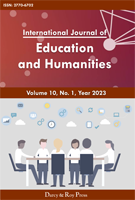The Division and Reconciliation of the Self: Perspectives on the Poetry of Haizi and Zhang Zao
DOI:
https://doi.org/10.54097/37zbqj45Keywords:
Haizi, Zhang Zao, Classical Poetry, Modern Chinese Poetry, SelfAbstract
The existential quandary encapsulated in the phrase-"my inquiry into myself, my debate with myself, my loss of myself, my encounter with myself"-not only reflects the solitary plight of the modern individual but has also become a central theme in modern Chinese poetry. The works of Haizi and Zhang Zao present divergent responses of the "I" confronting both itself and the external world. Haizi's oeuvre manifests a sustained schism within the subjective self; whether through the modernist renunciation of classical elements in his creative trajectory or the inward turn toward self-annihilation near his life's end, the binary oppositions within his work remain locked in a state of unresolved tension. In contrast, Zhang Zao, to a certain extent, embraces the classical poetic ideal of the "fusion of self and object," guided by a worldview reminiscent of a cosmos that embraces all things-an attitude governed by comprehension and all-forgiving love.
Downloads
References
[1] Hong, Z., & Liu, D. (2005). History of Contemporary Chinese Poetry. Peking University Press.
[2] Hockx, M., & Zeng, Z. (2006). Comprehensible or Not: Some Issues in the Research and Teaching of Modern Chinese Poetry. Social Science Forum, (3), 86-89.
[3] Zhu, S. (2001). On the Inheritance and Transformation of Classical Imagery in Modern Chinese Poetry. Fujian Tribune (The Humanities & Social Sciences Monthly), (01), 55-62.
[4] Wang, D. (2024). Haizi's Poetry and the Cultural Consciousness of China in the 1980s. Jianghan Academic, (5).
[5] Zhang, Z. (2020). The Poems of Zhang Zao. People's Literature Publishing House.
[6] Haizi. (2024). The Complete Classic Poems of Haizi. Jiangsu People's Publishing House.
Downloads
Published
Issue
Section
License
Copyright (c) 2025 International Journal of Education and Humanities

This work is licensed under a Creative Commons Attribution 4.0 International License.

















